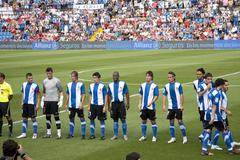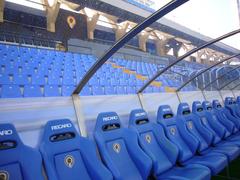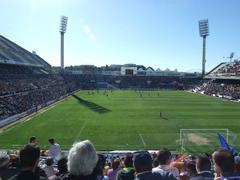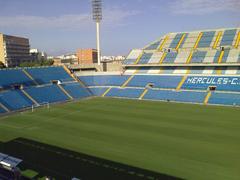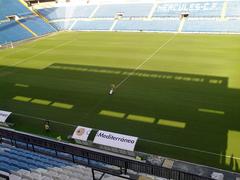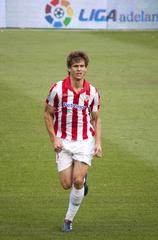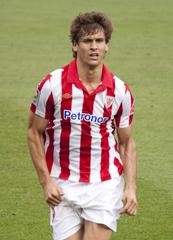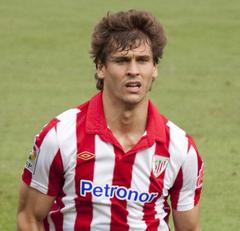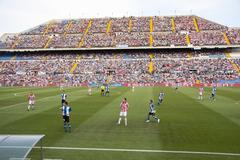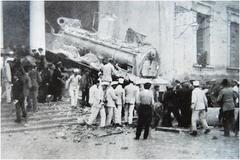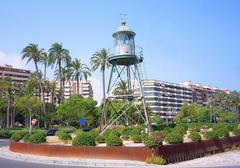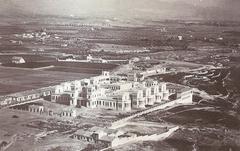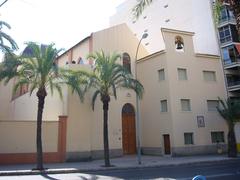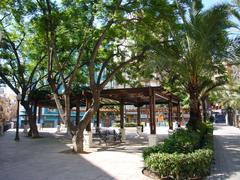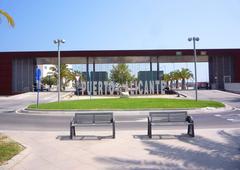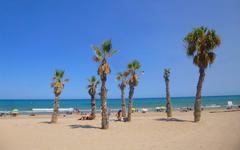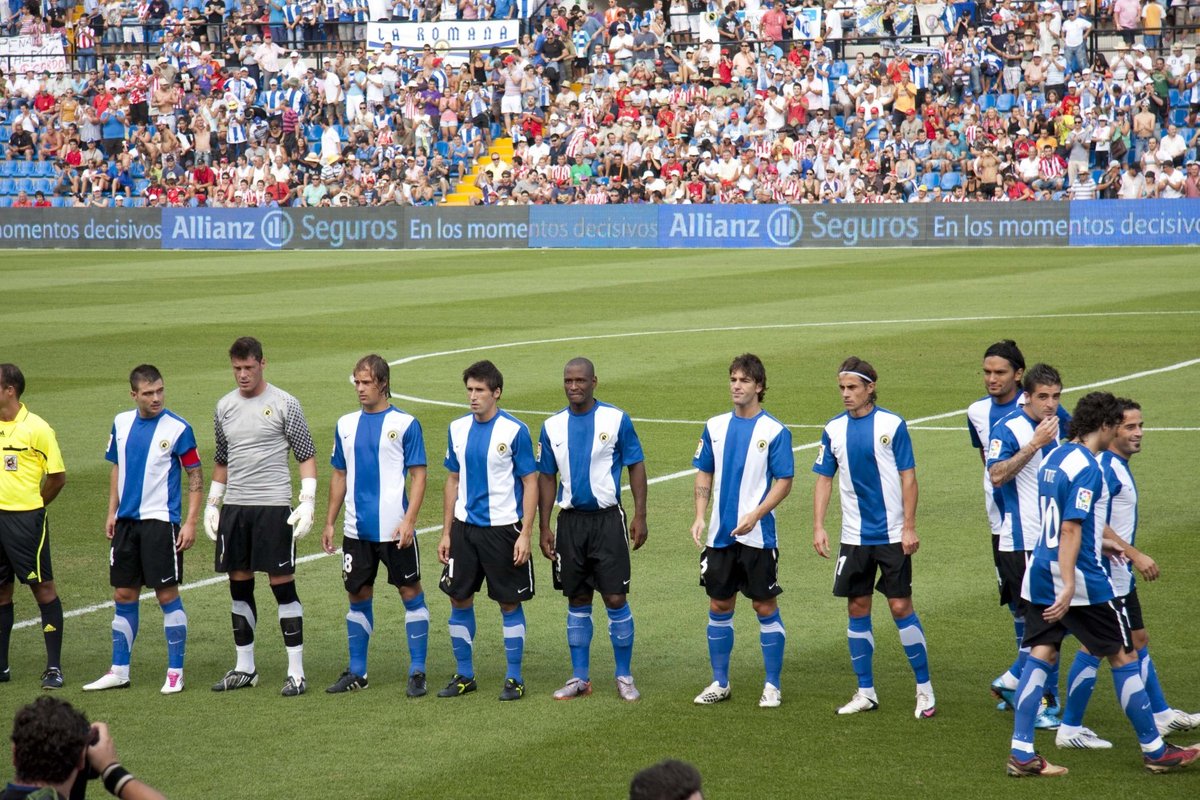
Estadio José Rico Pérez: Visiting Hours, Tickets, and Alicante Historical Sites Guide
Date: 14/06/2025
Introduction
Estadio José Rico Pérez is one of Alicante’s most significant landmarks, embodying both the city’s deep-rooted passion for football and its vibrant cultural heritage. Since opening in 1974, the stadium has been the home of Hércules CF and a venue for international events, notably the 1982 FIFA World Cup. Today, it offers visitors a blend of sporting excitement, historical insight, and access to the broader attractions of Alicante. This guide provides everything you need to plan your visit—from practical details like visiting hours and ticketing to the stadium’s historical importance and its role in the community.
For the most current information, always refer to the Hércules CF official website, Wikipedia, and local tourism resources.
Table of Contents
- Origins and Construction
- Architectural Features
- Major Events and International Recognition
- Visiting Hours and Ticketing
- Accessibility and Facilities
- Location and Getting There
- Matchday Experience and Stadium Tours
- Community and Cultural Impact
- Nearby Attractions
- Frequently Asked Questions (FAQ)
- Conclusion
- References
Origins and Construction
The Estadio José Rico Pérez arose from the aspirations of Hércules CF and the city itself. In the late 1960s, the club needed a modern venue to match its growing ambitions and fanbase. Thanks to the vision and determination of club president José Rico Pérez, the stadium’s namesake, construction began in the early 1970s. The project was strategically positioned near Monte Tossal and the Castillo de San Fernando, on land purchased with funds secured after a pivotal Copa del Generalísimo match (Wikipedia, Alicante Vivo).
Completed in just 11 months at a cost of 28 million pesetas, the stadium symbolized Alicante’s modernization and pride (Centrocampista). Its inauguration in 1974 marked a new era for Hércules CF and the San Blas Norte district.
Architectural Features
Estadio José Rico Pérez is a classic example of 1970s Spanish stadium design, emphasizing functionality, panoramic sightlines, and integration with the urban landscape (Football Tripper).
Layout and Stands
- Tribuna Principal (Main Stand): Covered, with VIP and media areas.
- Preferente: Opposite the main stand; a favorite for regular fans due to excellent views.
- Fondo Norte and Fondo Sur: Behind each goal; vibrant with passionate supporters.
- Exterior: Exposed concrete, open walkways, and natural ventilation reflect modernist trends.
Facilities
- Capacity: Officially 29,500 seats, making it the fourth-largest in the Valencian Community (Wikipedia, Football Tripper).
- Pitch: Natural grass, maintained to professional standards.
- Lighting: Four floodlight towers for night events.
- Accessibility: Ramps, elevators, and designated wheelchair areas have been added in recent renovations.
- Amenities: Concession stands, restrooms, club shop, and hospitality suites.
Major Events and International Recognition
Estadio José Rico Pérez gained global prominence as a host venue for the 1982 FIFA World Cup. It held two group matches and the third-place playoff between France and Poland, bringing international attention to Alicante (Wikipedia). The stadium has also hosted nine matches for the Spanish national team, maintaining an unbeaten record during those fixtures (España Estadios).
Beyond football, the venue has been used for concerts and community events, enhancing its significance as a civic hub.
Visiting Hours and Ticketing
Visiting Hours
- Guided Tours: Usually available Monday to Friday, 10:00 AM–6:00 PM, by prior booking through the official website.
- Match Days: Gates open 60–90 minutes before kickoff; ticket office hours extend to match time.
- Non-Match Days: Ticket office operates 10:00 AM–2:00 PM.
Ticket Purchase
- Online: Buy through the Hércules CF official website.
- Box Office: Onsite during office hours and prior to matches.
- Pricing: Ranges from €15 (behind the goals) to €37 (main stand); higher for VIP areas and marquee fixtures (Stadium Guide).
- Tours: Pricing and availability vary; book in advance, especially for group visits.
Accessibility and Facilities
The stadium is equipped for visitors with reduced mobility, offering:
- Ramps and elevators
- Designated accessible seating
- Adapted restrooms
- Assistance upon request (inform the club ahead of your visit)
Other amenities include food and beverage kiosks, merchandise shops, and on-site first aid. The main stand offers the best shelter from sun and rain.
Location and Getting There
Address: C/ Romeu Zarandieta Nº 4, 03005 Alicante, Spain
Phone: +34 966 106 836
Email: [email protected]
Transport Options
- Walking: 20 minutes from Alicante-Terminal railway station, 30–35 minutes from city center.
- Bus: Lines 8a and 11 serve the stadium area (Stadium Guide).
- Taxi/Car: Taxis are available; parking is limited, especially on matchdays—public transport is recommended.
For details, see Subus Alicante and Alicante tourism.
Matchday Experience and Stadium Tours
Attending a Hércules CF match offers a lively, family-friendly atmosphere with passionate “blanquiazul” supporters. Pre-match, fans gather at local bars and cafes along Avenida de Alcoy.
Stadium Tours
Guided tours (by arrangement) include:
- Access to pitchside, technical areas, and changing rooms
- Visit to the press room
- Walk through the players’ tunnel
- A look at club trophies and memorabilia, including 1982 FIFA World Cup relics
Photography is allowed for personal use; professional equipment requires permission.
Community and Cultural Impact
Estadio José Rico Pérez is a powerful symbol of Alicante’s civic identity. Over the decades, it has:
- Brought the community together on matchdays and special occasions
- Hosted historic matches and major concerts
- Played a role in urban development of the San Blas Norte district
- Been celebrated in books and documentaries, such as “Rico Pérez. 50 años, 50 relatos” (Esdiario)
The stadium’s story is interwoven with Alicante’s own, serving as a living archive of the city’s sporting and social achievements.
Nearby Attractions
Combine your visit with other Alicante highlights:
- Castle of San Fernando: 19th-century fortress with panoramic city views (Stadium Guide).
- Santa Bárbara Castle: Iconic medieval fortress.
- Explanada de España: Palm-lined promenade.
- City Center: Plazas, shops, and restaurants.
- Postiguet Beach: 2.5 km from the stadium.
Frequently Asked Questions (FAQ)
Q: What are the visiting hours?
A: Guided tours are usually available Monday–Friday, 10:00 AM–6:00 PM by reservation. On match days, gates open 60–90 minutes before kickoff.
Q: How do I buy tickets?
A: Purchase tickets online via the official Hércules CF website or at the stadium box office.
Q: Is the stadium accessible?
A: Yes, with ramps, elevators, and designated seating for visitors with disabilities.
Q: Are cameras allowed?
A: Personal-use cameras are permitted; professional photography requires authorization.
Q: What items are prohibited?
A: Large bags, bottles, and potential projectiles are not allowed.
Conclusion
Estadio José Rico Pérez is a living monument to Alicante’s history, football culture, and community spirit. Its modern facilities, accessibility, and prominent location make it a must-visit for fans, history enthusiasts, and travelers. Whether attending a Hércules CF match, joining a guided tour, or exploring nearby historical sites, you’ll experience the passion and pride that define this iconic venue.
Plan ahead by checking visiting hours, securing tickets in advance, and using public transport for a smoother experience. For real-time updates, download the Audiala app and follow Hércules CF on social media.
References
- Estadio José Rico Pérez on Wikipedia
- Hércules CF Official Website
- Todo Alicante Article on Rico Pérez
- Football Tripper Guide
- Centrocampista Historical Overview
- Esdiario Coverage on 50th Anniversary Book
- España Estadios
- Stadium Guide
- Alicante Vivo
